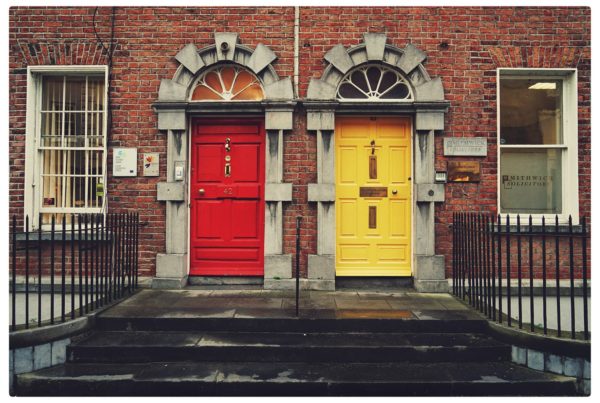Forensics and guess work
When I built websites, I was concerned with the transaction, the endpoint of the traditional sales funnel. The mechanics behind the browsing experience and guiding a customer through a conversion.
The purchase journey and the user experience played a part in that of course – but when I was putting sites together I was most often focussed on the operational – the technicalities of making sure you could easily buy a product in Magento for example, or that the subscription plugin for WordPress was easy enough to use. The goal was an effortless experience that users didn’t have to think about – whether researching, planning or buying.
When I worked in both PPC and SEO, I was focused on meeting demand. If enough people searched using a specific relevant term (and it was viable), we’d target it – either using ads or optimised content. If I saw a large amount of brand search volume, I’d usually assume the brand had high awareness and loyalty (though often I’d be surprised by seemingly disproportionate numbers of brand searches for smaller clients).
The process typically began with search demand – 2500 searches every month – let’s target that. I didn’t spend much time thinking about why the demand existed, it existed, and my job was primarily to pull a share of that demand to a website, so the focus was on getting visibility for the search and providing a relevant experience for the visitors that followed.
Broadening Reach
In my first weeks focusing on Facebook I stepped out of the thin end of the funnel and began to climb the sloping sides to the top. Accustomed to reasonably precise Google Analytics stats (with unyielding last click attribution models), it took me some time to get my head round the view attribution stats Facebook was reporting. My transactional SEO and PPC assumptions were kicked squarely in the teeth by the relatively long 28 day attribution statistics, and I began to appreciate the true complexity of customer journey from the perspective of a Facebook advertiser.
Clients would sometimes have over 50% of their purchases attributed to ad views (users weren’t clicking on the ads – only seeing them). Purchase cycles varied wildly depending on products, pricing and markets – impulse purchases and sales converted quick, luxury products and complex services required gradual stages of communication, and average purchase lag might extend to 20 days while they moved through each decision-making stage.
I found myself monitoring my own purchase journeys more closely, understanding the touchpoints, trying to recognise the key influencing moments, and as I did so, I began to understand just how powerful a channel Facebook is, and how it complements and works with others.
If we could test and learn – understand these journeys on behalf of our clients, translate the stages into relevant, engaging creative, and then use the ridiculously granular demographic, interest and lifestyle targeting options Facebook offers, to find exactly the right market segment to talk to, everything fell into place.
My understanding of what generates the search demand began to deepen. Only a few Facebook users click and buy immediately upon seeing an ad. Plenty more open a new tab and search for the brand or product in the ad, move to a different device to complete a purchase, or come back to the site later at a more convenient time. It’s all very messy, and ultimately reflects the natural and complex way in which we make purchase decisions.
This ultimately heightens the need for PPC, SEO and UX to be at the top of their game too. Facebook is building all this awareness, generating demand that converts in all sorts of imprecise, messy, human ways, and so your site needs to be available front and centre when the next stage of the purchase cycle arrives. It needs to ensure that whatever your Facebook ads were promoting is easy to find for all those people who saw the ad but didn’t click, and that the site messaging and signposting clearly reflects the promise of the ad. Without that clear user journey, without the signposts that seal the conversions promised by the ads, you’re left only with the users who see your ad and can decide and purchase at that very moment. I used to think that was the majority.
Measuring
It all gets a bit messy when you’re trying to attribute the performance of your marketing budget of course.
Facebook will report on all purchases in which it has been part of the process. If you saw a Facebook ad, didn’t click, and then googled the brand and purchased 10 days later, that sale can be attributed back to the Facebook campaign.
In your analytics, it’ll look like organic or PPC, as that was the last click prior to purchase – so we end up with organic and PPC attributed sales in which Facebook ads were part of the customer journey, but not the final step.
There are some expensive solutions to this data crossover, but until Google and Facebook stop competing for your advertising budget, it’s unlikely we’ll see them holding hands on this issue and presenting an inexpensive combined solution any time soon.
This is the conversation I now have the most often with our clients, and when I put myself in their shoes, it’s easy to understand – they want to know where to put their money – Facebook claims X, Google claims Y. Google has the analytics platform that everyone (including myself) has come to know and trust, and so when what appears to be a discrepancy arises, the immediate suspicion falls on the other party. Of course, it isn’t a discrepancy, just different attribution of complex behaviour.
The bottom line is that you can’t base channel budget splits on last click attribution. Do that and you’ll be over-egging the bottom of the funnel by a country mile, severely limiting your growth.
Instead, you really need to spend time on the Facebook numbers, look at view attribution and purchase lag as well as click, get that insight into the customer journey and try to build a more relevant attribution model based on all the channel data.
As with any promotion, to properly capitalise you need the PPC, SEO and UX prepared and organised on the same theme as the awareness raising Facebook campaigns you use. It all goes hand in hand, and arguing about which channel performs best becomes less important when this mix is broadly right for your customer journey and the conversions start coming. Instead, working on top notch creative and engaging messaging that’s consistent and relevant to your audience, across each channel becomes much more valuable.
Summary
I find myself forced out of my comfortable world of specific search demand numbers, precise click through rates and channel numbers, and thinking much more about the humans seeing the ads, considering the message, the creative catching their eye as they browse their newsfeed, getting interested, weighing the decision to buy, if the brand speaks to them, if they’re on the train, or browsing their mobile while monitoring a toddler, or at work on their desktop planning how to spend their cash when payday arrives next week.
It’s so much messier than down at the bottom of the funnel – but it’s also much more representative of the true complexity of the real customer journey to purchase.






